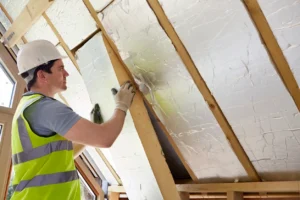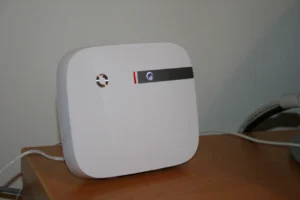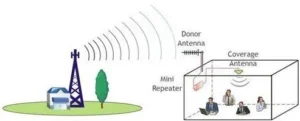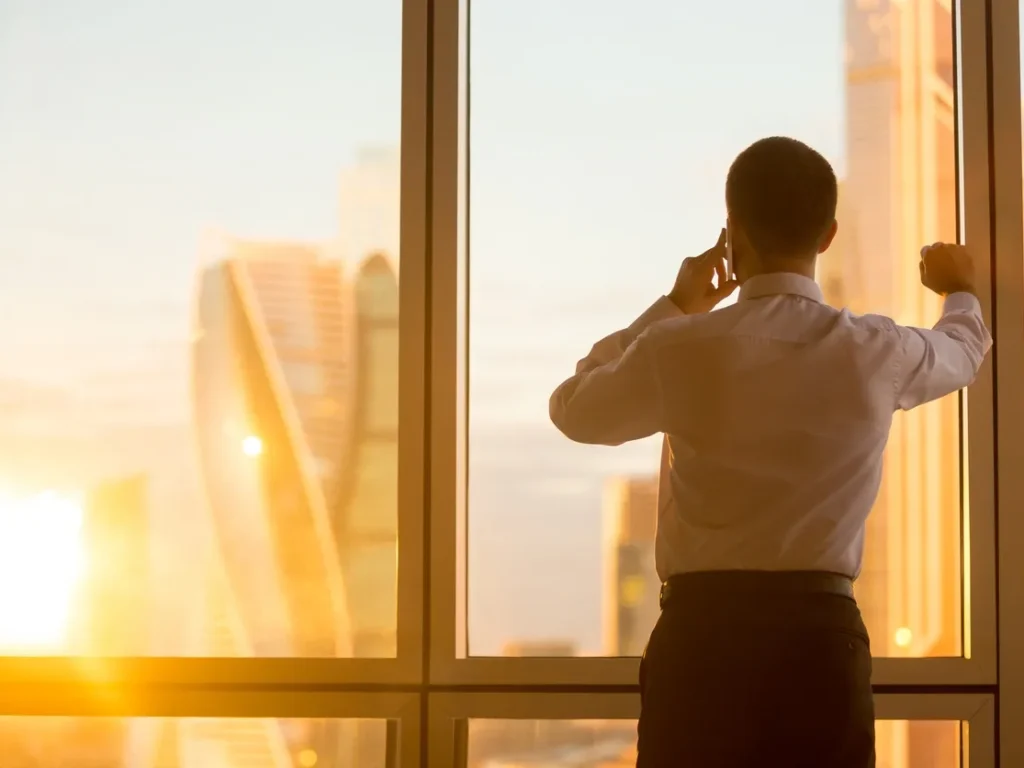A familiar phrase in most offices, homes and public buildings…
It’s annoying, isn’t it? With all of the modern technology at our hands, even in our hands, and our reliance on devices never greater, we still can’t seem to get a mobile signal where we need it most.
The reasons for this are linked with our demand for greater energy efficiency and determined by the materials we use in the construction of buildings. Most notably for strength and insulation.
Mobile phone networks use radio waves to communicate between the devices and the transmitters. However, Unlike TV or Radio where the transmitters are only sending in one direction to the receiver, they are a two-way communication. Mobile phones rely on the signals from both sides being strong enough to reach the other party.
We have a solution…
The barriers to mobile phone signals.

Higher frequencies are prone to obstruction. You can easily see this with modern WiFi installations where the 2.4Ghz band can reach further and penetrate walls better than the more modern 5Ghz band. Here are some examples of things that are likely to block mobile signals.
- Concrete – Particularly the steel reinforced kind. Found in almost all offices around the world, concrete absorbs radio waves, allowing very little to pass through. Add in the steel mesh and you end up creating a very effective signal blocker.
- Coated Glass – Plain glass is not a barrier to radio waves. Unfortunately modern glasses are almost always backed with a material that not only reflects heat, therefore increasing thermal efficiency, but is also very good at reflecting mobile signals. Those big fancy buildings with panoramic glass fronts look fantastic, but they’re a major obstruction to mobiles.
- Foil backed insulation – The Celotex/Kingspan style of foam compressed between two layers of aluminium foil. It’s a great insulator and does a very effective job of keeping buildings warm, but the foil is very reflective to mobile phone signals and the foam is very absorbent.
The existing solutions

- Stand by the window – Simple, but not very practical. For many years this has been our workaround. Find a spot where signal is good and stay very still. It’s not conducive to a good conversation. It can distract other people if the sweet spot happens to be near somebody else’s desk and it can be frustrating having to run for the window every time the phone rings.
- Femtocell – Known by many as a “Sure Signal”, these are usually available from your network. Femtocells create a link to the carrier using the internet and then broadcast a very small mobile signal. In most cases these are designed for domestic use and you have to register the mobile phone of authorised users. These are very effective, but there is always reliance on internet connectivity and they are not interchangeable between carriers. So, if you buy a Femtocell from Vodafone, you’re stuck with Vodafone, making it very difficult to change providers.
- Wifi Calling – Another practical solution that can work very well in a domestic environment. It does have it’s drawbacks though. You are entirely dependant on the strength and coverage of your WiFi signal. In a commercial environment it’s not so practical. You need to allow all devices access onto your WiFi network in order for them to use it, plus you need to ensure that the voice traffic being carried by WiFi has priority over the normal data, otherwise you’re going to suffer from choppy phone calls and disconnections.
The next step…

In April 2018 Ofcom removed the restrictions surrounding mobile phone signal repeaters, allowing them to be used without licensing, for the purpose of alleviating indoor mobile black spots. There are some restrictions (which we can fully explain if needed), but essentially we’re now allowed to grab the signal from outside, bring it inside, boost it and then rebroadcast it.
The technology has been around for a long time, it’s well developed and reliable, but it’s only since 2018 we’ve been allowed to use it. Litenet have researched a number of products to help alleviate the issue of poor indoor mobile signal and we have a great deal of experience when it comes to cordless communications of all kinds, whether it’s corporate DECT estates, WiFi or mobiles.
There are plenty of reasons to choose a signal repeater solution over any other.
- No reliance on internet connectivity – If the internet goes down you can still use mobiles.
- Carrier agnostic – you can change corporate mobile providers without having to swap out expensive hardware.
- Doesn’t affect WiFi – No extra traffic on your Wifi network, using up valuable bandwidth.
- Easy installation – Even on the biggest installations, our engineers can take care of the full installation and cabling.
- Strong Signal – Reduces battery consumption on your devices.
We work with Cel-Fi products. Approved for all carriers, approved by Ofcom, Enterprise grade and unconditionally network safe. They are the leaders in signal repeater technology and have deployed in over 100 countries. We have undertaken training from the manufacturer to supply, install and maintain their products.
Litenet are uniquely positioned to supply, install and maintain mobile signal repeaters in offices and buildings just like yours.
Call us on 01908 794 794 or email info@litenetuk.com to find out more!



